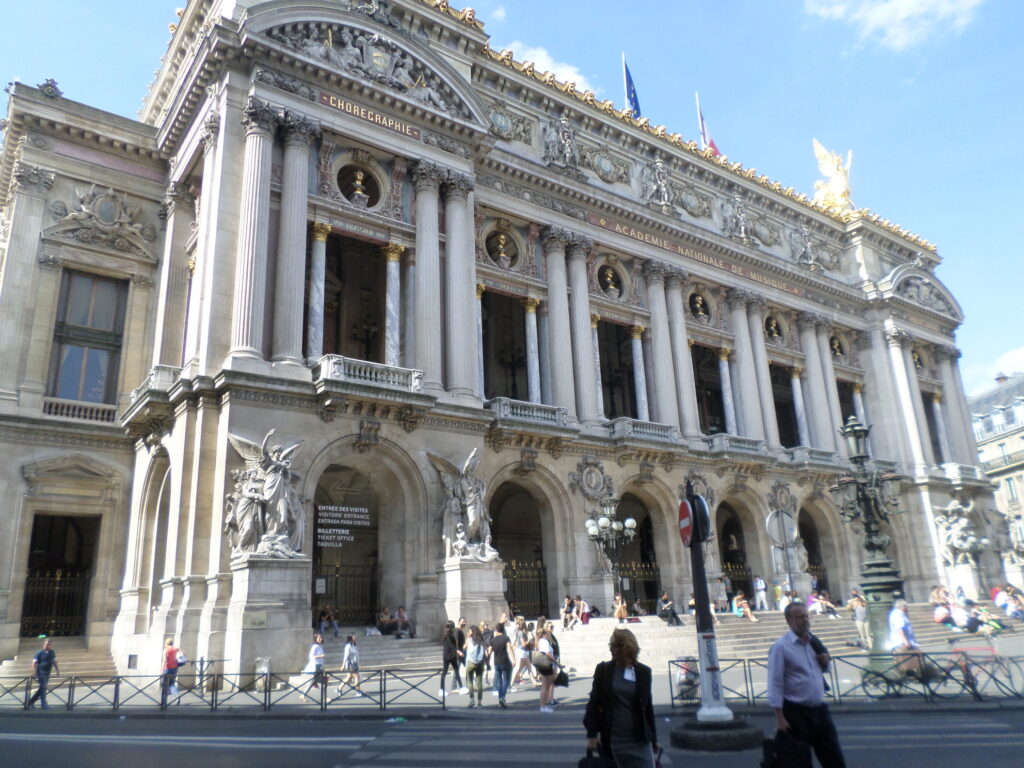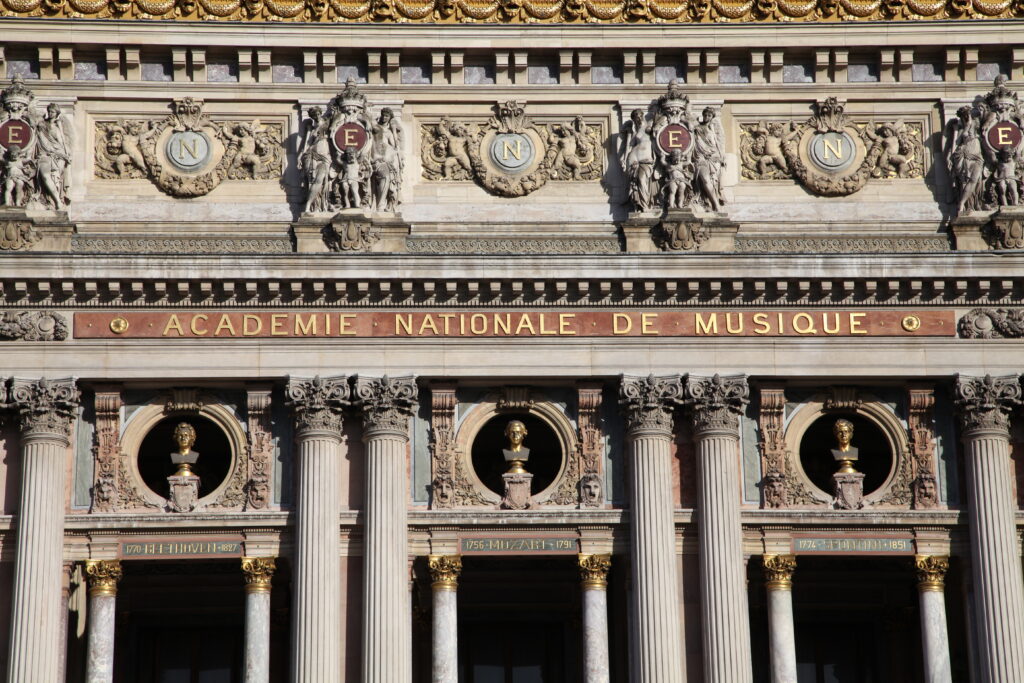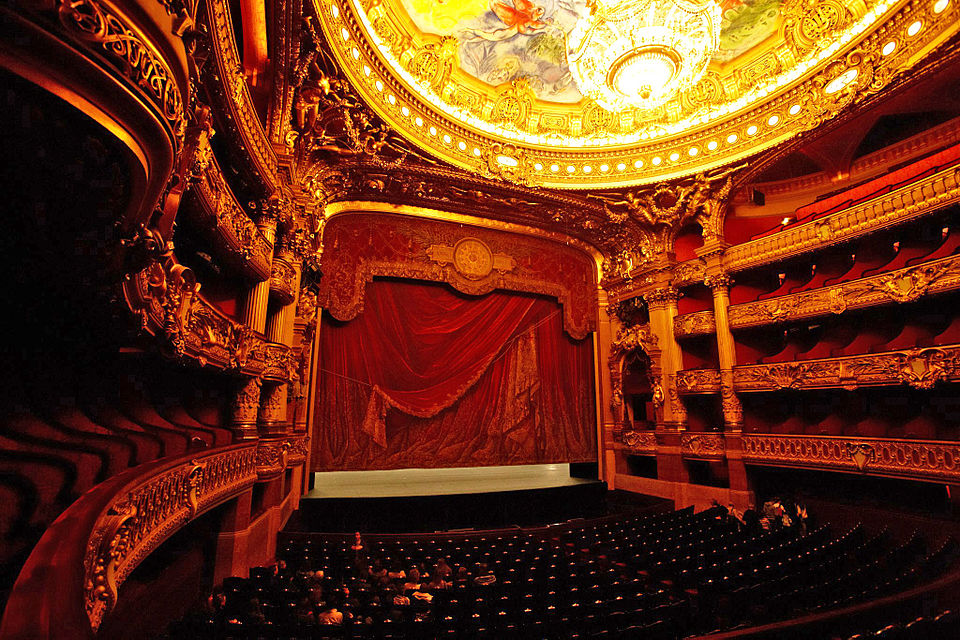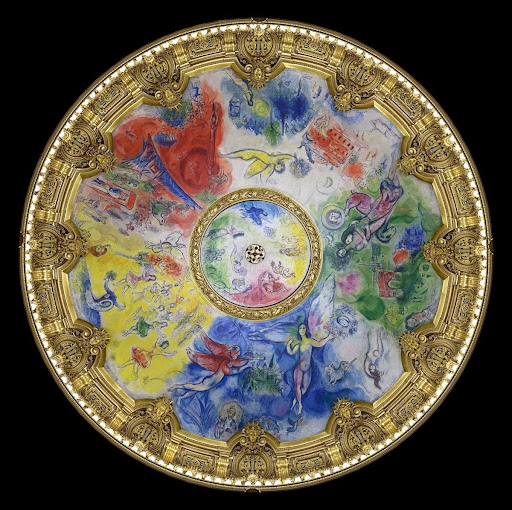The Untold Story of Italian Craftsmanship in American Architecture
American cities are renowned for their many architectural landmarks, featuring ornate domes, columns, and sculpted façades. Less widely recognized,...
Maya M. Tola 4 August 2025
When we talk about the beautiful sights of Paris, many first think of the obvious ones—the Eiffel Tower, the Louvre Museum, and the Notre-Dame Cathedral. However, Paris is also home to one of the most famous opera houses in the world—the Opéra Garnier. With its stunning interior and grand design, many consider the Parisian opera house to be the most beautiful building in all of Paris.

Entrance to the Opéra Garnier, Paris, France. paris1972-versailles2003.
Opéra Garnier, designed by architect Charles Garnier and completed in 1875, features a lavish auditorium and several public spaces, including the grand foyer, elegant lounges, rehearsal studios and a museum-library. It was commissioned by the Emperor Napoleon III, and for over a century, it served as the main venue for the Paris Opera and the Paris Opera Ballet. Since the opening of the Opera Bastille in 1989, the Palais Garnier has been used primarily for ballet performances.
The Opéra Garnier was built in the richly decorative “Napoleon III” style, known for its eclectic blend of historical influences. Architect Charles Garnier combined elements from Baroque, Renaissance, and classical architecture with modern techniques and materials like iron framing. Every surface, inside and out, was richly adorned with varieties of marble and stone, porphyry, and gilded bronze. The façade alone featured 17 types of materials, including colorful marbles and intricate statuary inspired by Greek mythology. The effect of the building is dramatic and truly captures the spirit of the theatre.

View of the Grand Foyer looking east, 1869, Opéra Garnier, Paris, France. The Paris Pass.
The Opéra Garnier’s main façade showcases arcades, stone columns, and intricate sculpture work while overlooking the Place de l’Opéra. Its decoration involved 14 painters, mosaicists, and 73 sculptors. At the highest points, there are two beautiful golden pieces, Harmony and Poetry, that elevate the entire building even more.
Beneath Poetry, on the east pediment, another sculpture portrays Painting and Sculpture, each seated with symbolic objects. On the opposite west pediment, a relief features Architecture with a compass and a winged figure holding a torch. Alongside, Industry holds a lead ingot and hammer, accompanied by another winged figure carrying a cup of jewels.

Façade of the Opéra Garnier, Paris, France. Photograph by MarcJP46 via Wikimedia Commons (CC BY-SA 4.0). Detail.
On the very top, an elaborate frieze displays 53 gilded cast-iron masks of comic and tragic theatre. The attic level of the façade features reliefs with the imperial monogram “N” and “E” for Napoléon Empereur. Figures of women holding symbols like trumpets, torches, and palms, a theme that repeats four times. Seven additional reliefs show medallions framed by scrolls, flanked by children holding floral and fruit garlands. As a final touch to this already rich content of the façade, gilded bronze busts between the front columns honor celebrated composers such as Rossini, Auber, Beethoven, Mozart, Spontini, Meyerbeer, and Halévy.

Grand Foyer, Opéra Garnier, Paris, France. Photograph by Degrémont Anthony via Wikimedia Commons (CC BY-SA 3.0).
Following the rich exterior features, the interior of the opera also stands out with its complexity and richness of decoration. The interior is expected to handle large crowds and provide space for socializing during intermissions, facilitated by a striking network of corridors, staircases, alcoves, and landings. Velvet, gold leaf, and figures of cherubs and nymphs decorate the interior, reflecting the lavish style of the Baroque.

Grand Staircase, Opéra Garnier, Paris, France. Photograph by isogood via Wikimedia Commons (CC BY-SA 4.0).
To enter the opulent Grand Foyer of the opera, visitors stride up the grand white marble staircase. Its grandeur is heightened by splitting into two sweeping flights accented with red and green marble balustrades. Designed as a gathering space for Parisian society, the foyer’s ceiling depicts scenes from the history of music and features eight paintings of the Greek Muses. At the foot of the grand staircase, stands a remarkable Bassin de la Pythie, featuring the statue of the Pythia—the priestess of the Temple of Apollo, the Greek god of arts.

Bassin de la Pythie, Opéra Garnier, Paris, France. Photograph by Britchi Mirela via Wikimedia Commons (CC BY-SA 3.0).
There is also the Avant-Foyer, or Foyer of Mosaics, whose walls feature four pairs of mosaic panels showing Greek mythological couples—Hermes and Psyche, Artemis and Endymion, Orpheus and Eurydice, and Eos and Cephalus—alternating between themes of love and death.
One of the most impressive parts of the Opéra Garnier is the auditorium. It boasts one of the largest stages in Europe, capable of holding up to 450 performers with possible seating for 1,979 people. The auditorium is shaped like a traditional Italian horseshoe, and due to both its architectural design and choice of materials, it is renowned for its outstanding acoustics. Take this virtual tour to grasp its grandeur.

Auditorium, Opéra Garnier, Paris, France. Photograph by Naoya Ikeda via Wikimedia Commons (CC BY-SA 3.0).
One of the most remarkable elements in the opera’s auditorium is the seven-ton bronze and crystal chandelier, which was also designed by Garnier. Despite its grandeur, the chandelier aroused controversy. It was criticized for blocking views of the stage and the ceiling paintings. At one point, the chandelier’s counterweight fell through the ceiling into the auditorium and killed a concierge. The incident is reminiscent of a key scene in Gaston Leroux’s 1910 novel, The Phantom of the Opera. The famous story follows talented soprano Christine Daaé who is being pursued by a mysterious, disfigured genius living beneath the Paris Opera. It is believed that the story is partly inspired by the falling chandelier and other real events, as well as a legend about a ballerina’s skeleton. Today, the tale is best known through Andrew Lloyd Webber’s popular stage musical adaptation.

Marc Chagall, Ceiling frescoes, 1964, Opéra Garnier, Paris, France. Photograph by Ninara via Wikimedia Commons (CC BY 2.0).
In 1964, the artist Marc Chagall completely redesigned the Opéra Garnier’s ceiling, painting 2,400 square feet of frescoes. The bold new design reflects Chagall’s distinctive style which incited quite a bit of criticism. The ceiling features vibrant colors and detailed images, including winged figures, iconic Paris landmarks like the Arc de Triomphe, and various musical instruments.

Marc Chagall, Ceiling frescoes (1st set of panels), 1964, Opéra Garnier, Paris, France. Google Art & Culture.
Another interesting fact is that some of the real events of the Opéra Garnier were thought to have inspired Gaston Leroux’s The Phantom of the Opera. The famous story follows talented soprano Christine Daaé who is being pursued by a mysterious, disfigured genius living beneath the Paris Opera. It is believed that the story is partly inspired by real events as well as the legend about a ballerina’s skeleton. Today, the tale is best known through Andrew Lloyd Webber’s popular stage musical adaptation.

Gala, Défilé du Ballet, Opéra Garnier, Paris, France. Photograph by Agathe Poupeney/OnP. Opéra national de Paris.
Paris’ Opéra Garnier has long stood as a symbol of cultural excellence. Hosting world-class operas and ballets, it draws nearly 480,000 visitors annually, making it one of Paris’s most popular landmarks. More than just a performance space, it is a historic monument that reflects Paris’s artistic and social evolution. Since 1923, it has been protected as a historical monument, adding to the city’s reputation as a global center for art and culture.
DailyArt Magazine needs your support. Every contribution, however big or small, is very valuable for our future. Thanks to it, we will be able to sustain and grow the Magazine. Thank you for your help!